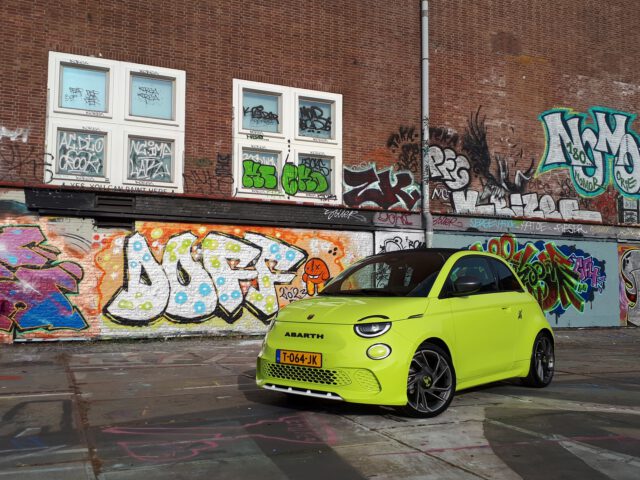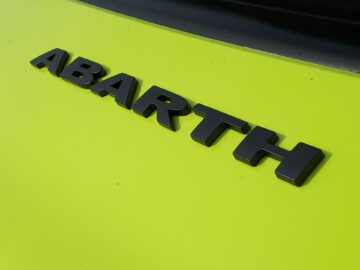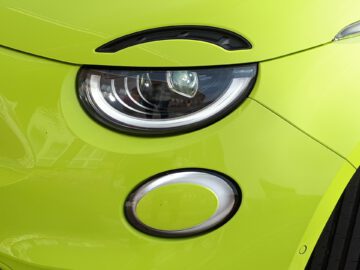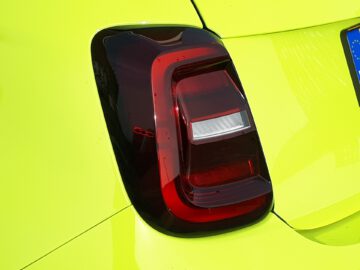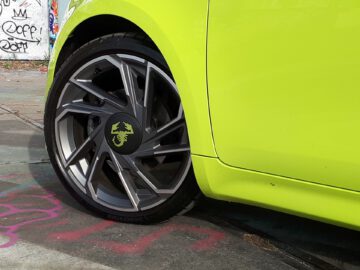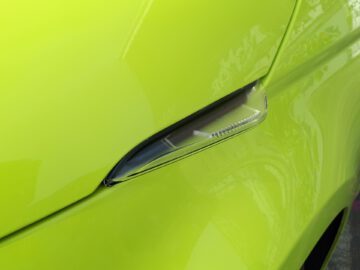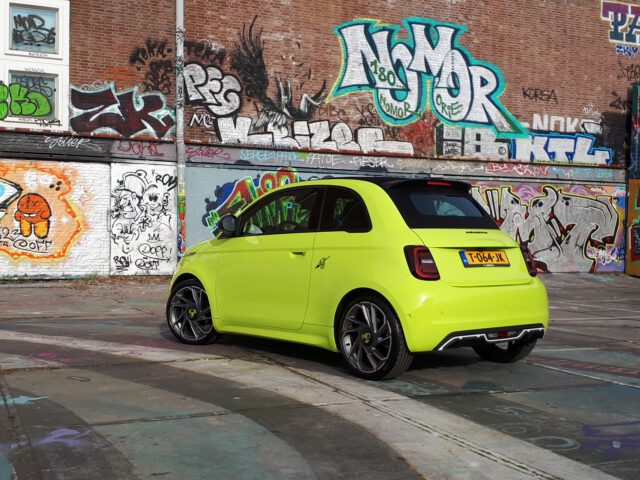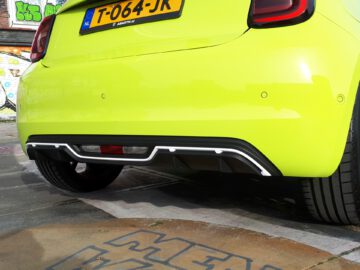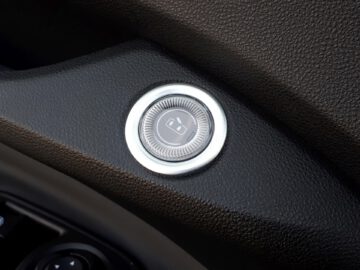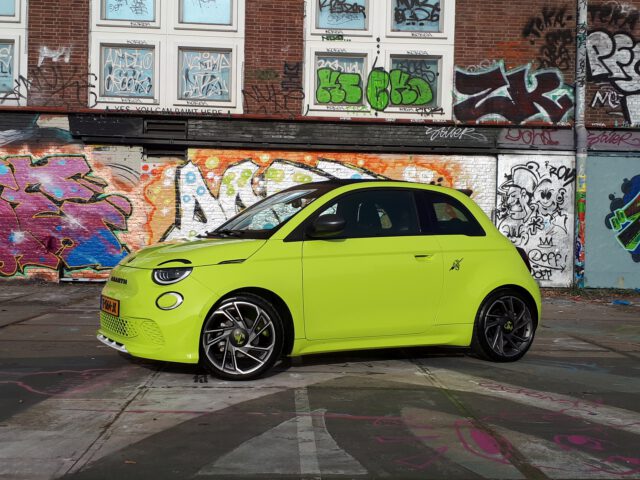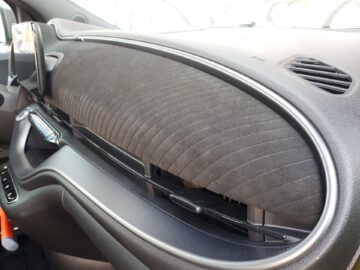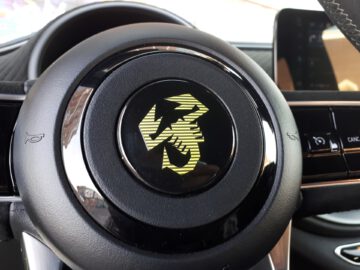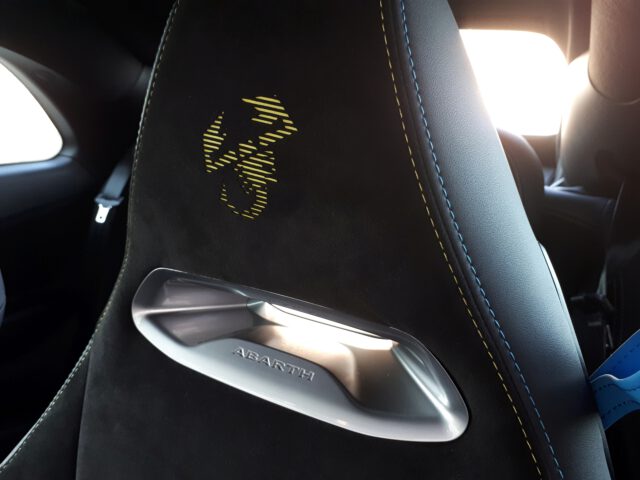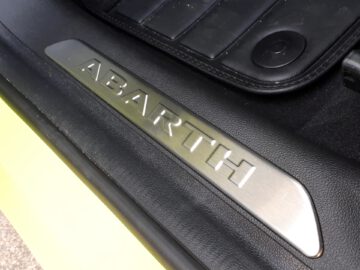Review – Abarth 500e Cabrio Turismo (2023)
Rightly or wrongly: from 2035, no new cars with fuel engines may be sold in Europe. In the meantime, brands must continue and further reduce the average CO2 emissions of their models. So what do you do, as a manufacturer of sporty cars whose distinctive sound is an integral part of the driving experience? Well, you come up with something like this: the Abarth 500e.

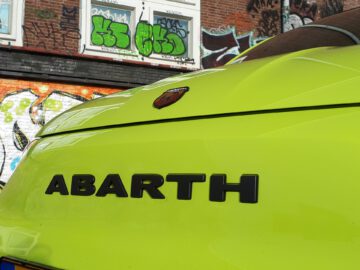
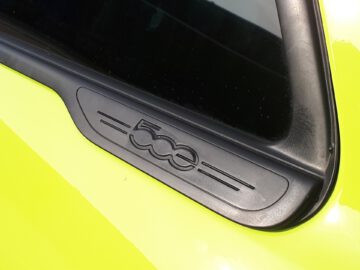
Abarth 500e specifications
Let’s start right with the specifications. The Abarth 500e – regardless of the specific version – boasts an output of 114 kW (155 hp) and up to 255 Nm of torque. As before, the engine is simply under the hood and drives the front wheels. With that power, the Abarth sprints to 100 km/h in exactly 7.0 seconds, and the top speed is 155 km/h.
This already makes the performance equivalent to that of the gasoline models of the past. The previous Abarth 500 family did have some more powerful versions, but because the Abarth 500e has its power and torque readily available thanks to the electric motor, it does have the fastest acceleration. In fact, the intermediate sprint from 40 to 60 km/h takes only 1.5 seconds. From standstill to 100 km/h, only the Abarth 695 Biposto was just a bit faster.
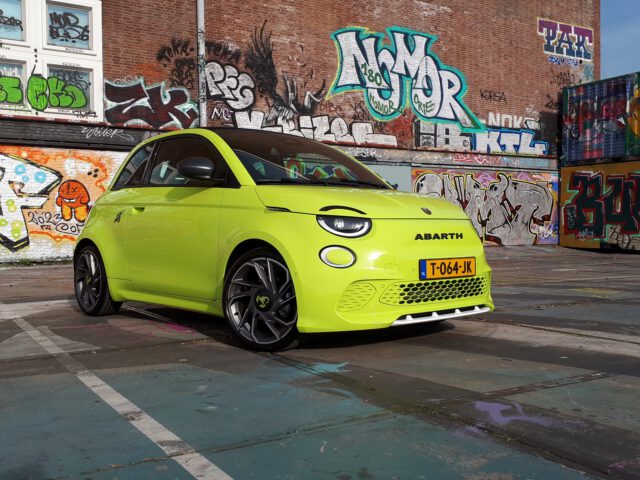
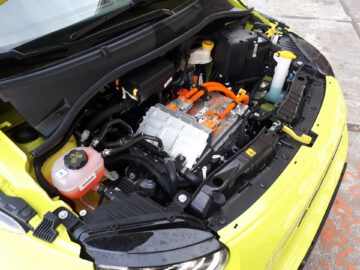

Driving range Abarth 500e
Also not unimportant with an electric car: range. The Abarth 500e features a 42.2 kWh battery pack (37.8 kWh usable), good for a WLTP range of 242 km. This is the value for the Abarth 500e Cabrio Turismo we tested. The other 500e models have a slightly longer range, up to 265 km depending on the version. The range in practice we will come back to, we would like to go out by car first.
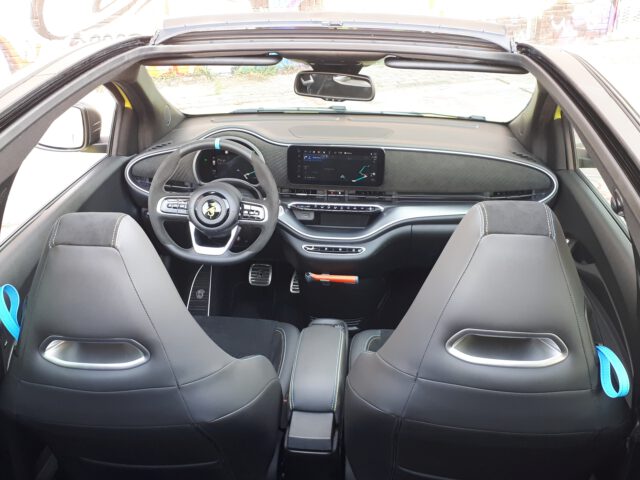
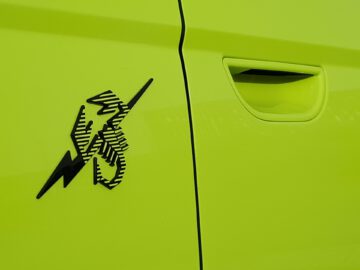
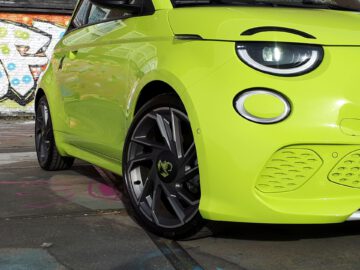
Driving the Abarth 500e
Behind the wheel is familiar, as if you were in a traditional Abarth 500 model. This also means that the seating position is relatively high, both relative to the car and in absolute terms. For the sporty feel, it might have been nice if the seat could have been lowered a bit more. However, that sporty feeling comes immediately as soon as we hit the road. With readily available power, the Abarth shoots out of the starting blocks and feels faster than it is on paper. This is already true in the standard Turismo driving mode, in which power is limited to 100 kW (136 hp) and torque to 200 Nm. Let alone when you release all the power in driving mode Scorpion Street or Scorpion Track.
As with previous gasoline models, the Abarth 500e comes into its own best on twisty country roads. It handles the highway just fine, but driving faster does not make for more driving pleasure. No, it really invites you to take the shortcut to your destination. It attacks corners with pleasure, and its handling is impressive in the process. Within the limits of what is responsible on public roads, we were unable to tempt the Abarth to even a little understeer. Even sudden cross ridges do not upset him.
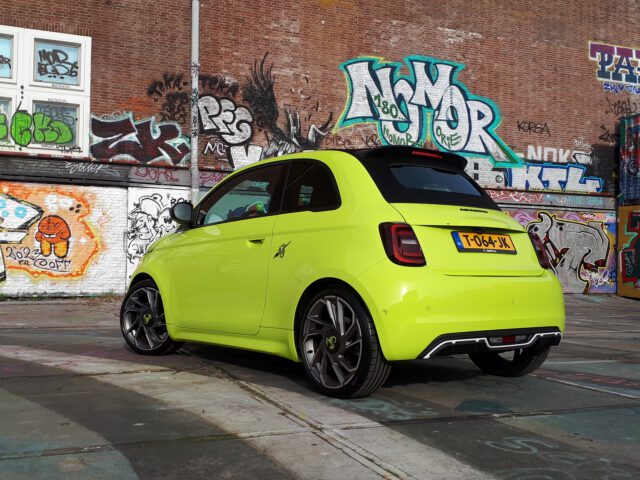
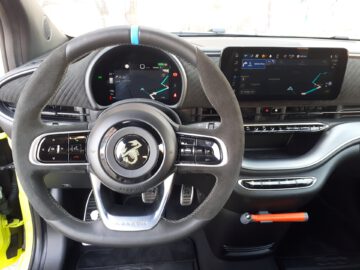
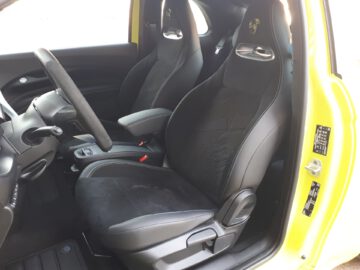
Here, too, electrical engineering actually offers an advantage. The Abarth 500 models with gasoline engines were relatively top-heavy, as the Trofeo Abarth 500 (racing class) showed at times. On the contrary, thanks to the battery in the bottom, the Abarth 500e lies like a block on the road. Admittedly, with a registration weight of 1,335 kg (1,310 kg for the hatchback), it is heavy for its size. On the other hand, this, along with that higher seating position, does make you feel, in a positive sense, that you are traveling with a larger car. Until you look back and see that you really are in a small hatchback after all.
In good Abarth tradition, the 500e does have hard suspension, such that even on a seemingly flat highway, you still find yourself “bouncing” at times. During a sporty drive, this actually adds to the “racing experience” of the car; during ordinary commutes, we would still have liked a more comfortable setting.

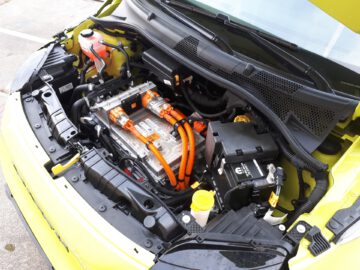
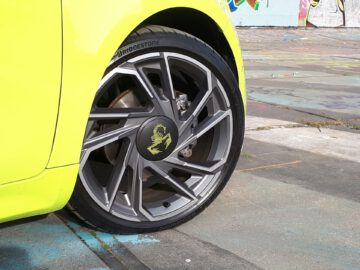
Is the Abarth 500e practical?
Which brings us right to the next point: practical ease of use. The Abarth 500e also has that covered. First, the new Abarth – like the Fiat 500e(road test) – has grown about six inches longer. That sounds like a small difference, but the interior space is much more improved sensationally. On paper, luggage space has remained almost the same at 185 liters. The extra length has mainly benefited rear seat space.
In the previous Fiat/Abarth 500, you really couldn’t sit in the back as a 6-foot tall adult. In the new Fiat/Abarth 500e, of course, it’s still cramped in the back, but the extra car length gives you just a bit more legroom. The front passenger still has to move his seat forward a bit more, and headroom also remains tight, but this time it fits. Just on.
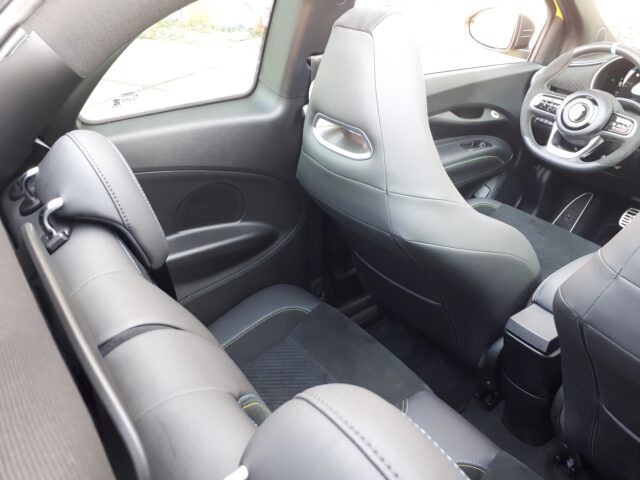

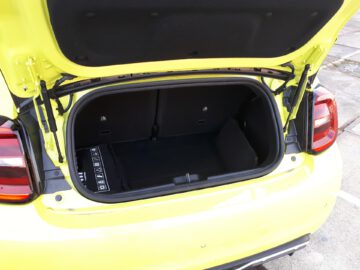
Abarth 500e range in practice
Another form of practical ease of use is real-world range. Average WLTP consumption for the tested version is 18.8 kWh/100 km. At the end of the test week, we arrived at an average consumption of 17.2 kWh/100 km. A lot lower, in other words. This was achieved with a fairly even distribution between highways and N roads. Otherwise, we mainly drove with the flow of traffic, although of course on the back roads we also turned on the sporty driving characteristics.
Our real-world consumption, with a usable battery capacity of 37.3 kWh, equates to a real-world range of 220 km. The car’s on-board computer agrees, because after fully charging the battery, it indeed predicted a range of around 220 km every time. Whether that’s enough for you is up to you, but as long as we could recharge at our destination, even longer highway trips were doable.
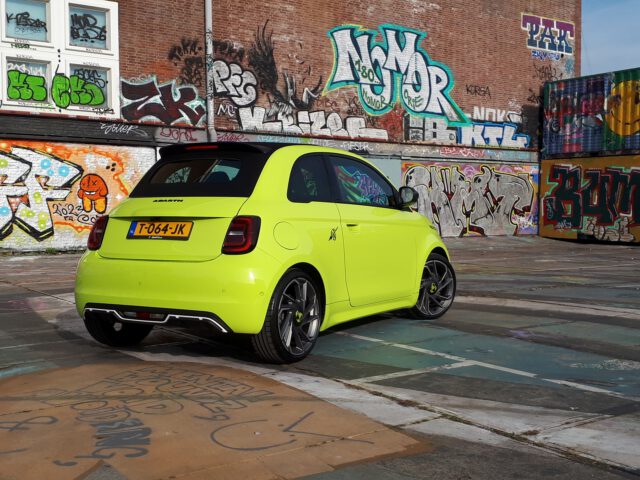
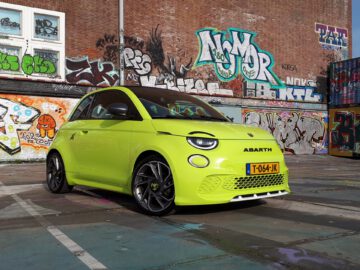
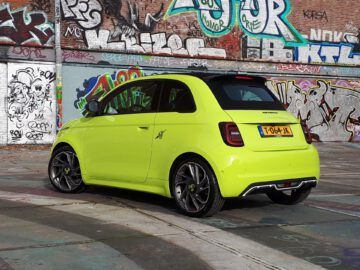
Quirks Abarth 500e
As a true Italian, the Abarth 500e also has some quirks. For example, we spent longer than we care to admit looking for the audio controls. The steering controls are hidden completely out of sight at the back of the horizontal spokes. You look in vain for the regular audio controls on the dashboard, as they are located between the seats, next to the electronic handbrake. You don’t expect it there. Then again, the transmission buttons (or better: drive direction selector) are on the dashboard, at the bottom of the center console and just a bit far away from you. Fortunately, you only need it during parking, that is, when you are stationary.
Something completely different: when unlocking and locking, only the indicators light up; you don’t hear a reassuring “click. A small thing, but we still doubted more than once that we had properly locked the car. Something that is still true of quite a few electric cars: there is not really a good storage place for the charging cable. That should just be loose in the luggage compartment (or crammed into an optional bag). Nice details include the skyline of Turin on the wireless smarthone charger and side window heaters (rear right) shaped like the A of Abarth. Although the latter will be coincidental, because the Fiat version has that too.
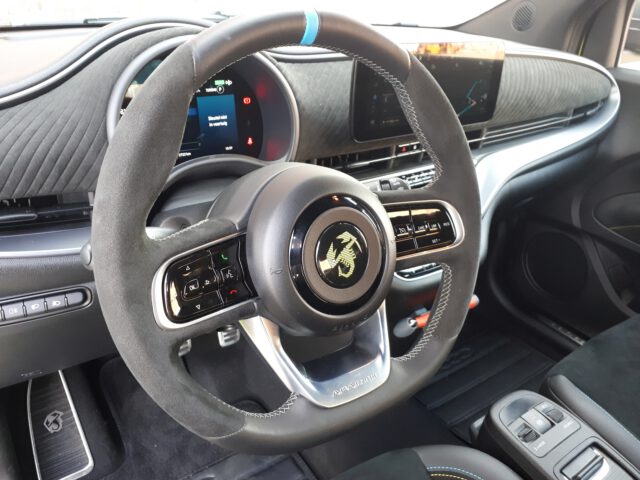
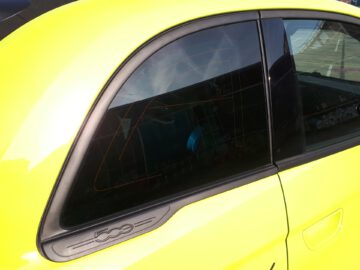

What about the sound?
Have we had everything then? Almost. We already hear the brand purists asking: an electric Abarth, it lacks that distinctive sound, doesn’t it? True, but Abarth has found a solution to that: the Engine Sound Generator. In flat terms, this is simply a large speaker under the rear bumper that produces the distinctive Abarth exhaust sound. Provided you enable it, because by default it is off. Switching on is done through a display settings menu – that’s not where you’re looking for it – which, moreover, is only accessible at idle. Talk about idiosyncrasies. By the way, the Engine Sound Generator is only available for the Turismo version.
Once engaged, the distinctive rumble of an idling Abarth can be heard. If you give “gas,” the “engine” climbs very convincingly in the revs. Less convincing is that the sound has no switching moments. It is like one long gear, with a volume that climbs with the driving speed. At constant speed, this also turns the sound into a monotonous hum or buzz, which is actually just a bit annoying, especially on the highway. Hopefully, a software update will follow that will add audible shifts. And while we’re at it: exhaust squirts on throttle release, as they are also missing.
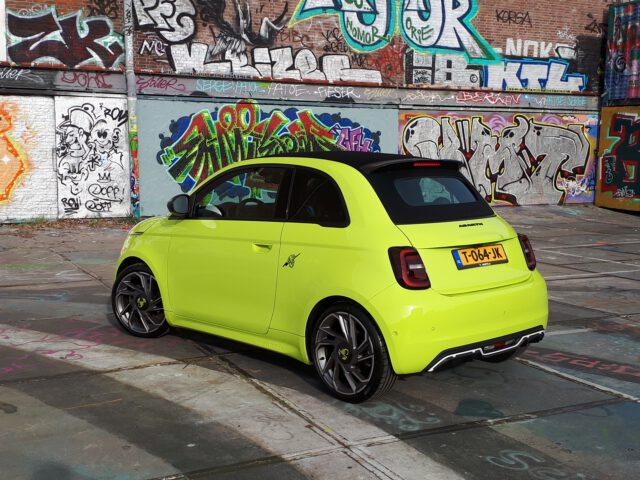
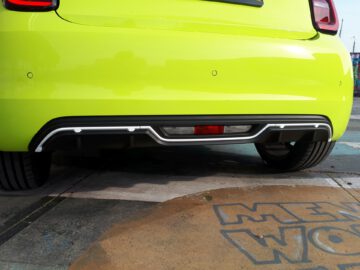
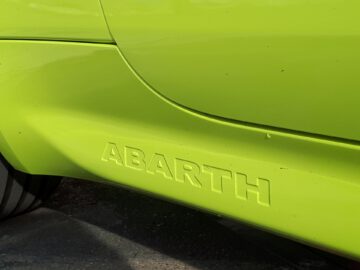
However, at varying speeds, such as on the aforementioned country roads, the sound is quite convincing. We were able to confuse others with it, even people with some car knowledge anyway. “Huh, but wasn’t the new Abarth only electric!?” On the other hand: especially if you know it, you can hear that you are listening to a recording anyway. You can play music through the best boxes, but you can still hear that it’s not a live orchestra. That idea. One last detail: the external speaker allows you to hear the sound outside the car better than inside. We would have done the exact opposite.
Prices and equipment
With sporty cars, prices are often the least fun chapter, and this is no different for the Abarth 500e. The price list starts at 38,490 euros for the Abarth 500e with fixed roof and 41,490 euros for the tested Cabrio. There is an additional 4,000 euros in both cases if you go for the Turismo version. For context, the regular Fiat 500e has a starting price of 28,990 euros (31,990 euros for the Cabrio).
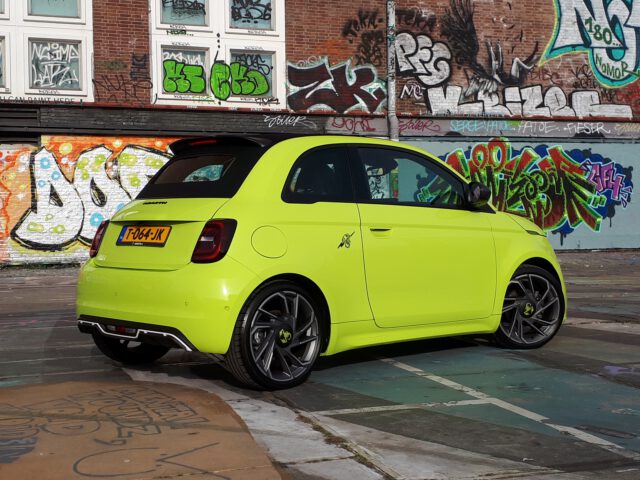
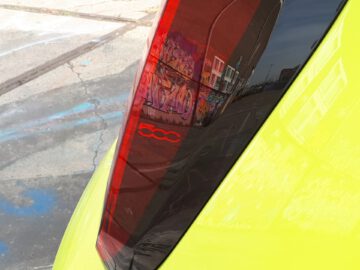
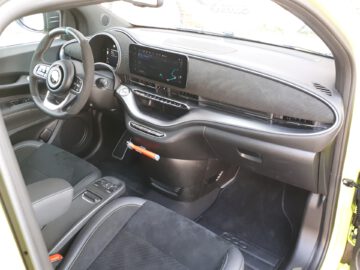
So the Abarth is not cheap, but in terms of equipment you get a lot in return. Some highlights: 17-inch sports alloy wheels, full LED lighting, sport seats with integrated headrests, automatic air conditioning, a 7-inch digital instrument cluster, 10.25-inch central touchscreen, preparation for wireless Apple CarPlay and Android Auto and Uconnect services. Also handy: an 11 kW on-board charger is also standard, so charging is quite fast. Of course, the usual safety and assistance systems are also on hand.
The test specimen is the Turismo version. Then you get 18-inch alloy sport rims, an alcantara and leather-clad sports steering wheel, alcantara-clad dashboard, seat heating, the Engine Sound Generator and a JBL audio system, among others. After that, only the striking body color Acid Green is ticked, bringing the total to 46,190 euros.
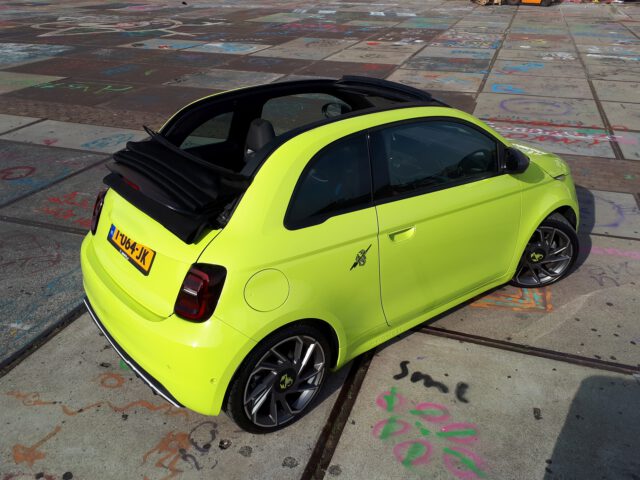
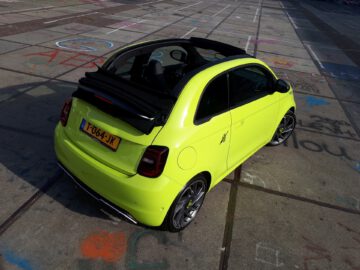

Conclusion
As far as we are concerned, the Abarth 500e is a successful continuation of the beloved gasoline-powered Abarth models. The new Abarth also shows that you really don’t need huge engine power to have a lot of driving fun. This really is another one of those cars that invites you to disregard the main roads and enjoy the twisty back roads. Moreover, the readily available power makes it feel faster than it is on paper. In fact, it may be swearing in the Abarth church, but it actually drives a little more fun than the gasoline Barth because of that instant response… And that Sound Generator… well. The idea is nice, but at least in its current form, we don’t need it that way. The Abarth 500e convinces even without sound.
